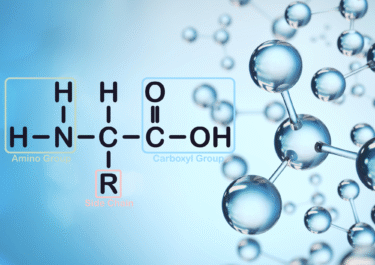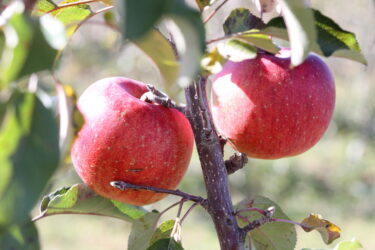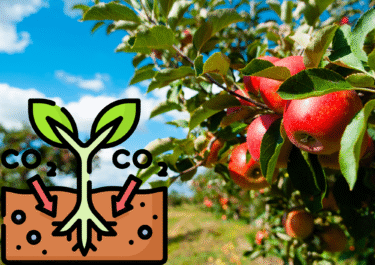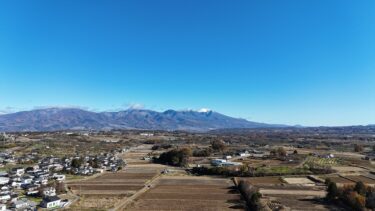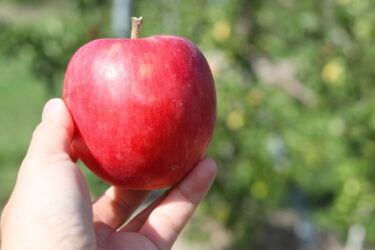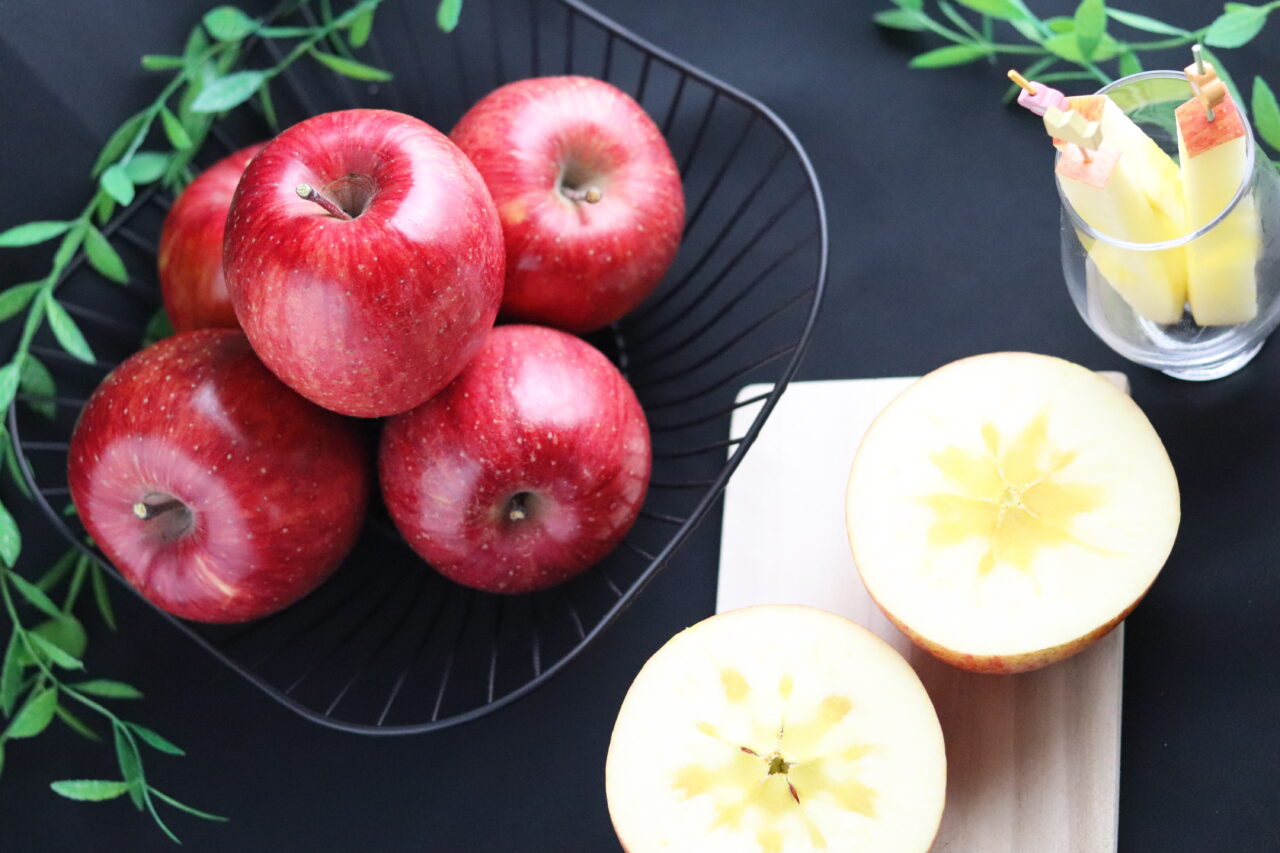- はじめに:植物はアミノ酸を食べる?
みなさんは、植物が栄養をどうやって取っているか知っていますか?
ふつう、植物は「窒素(ちっそ)」を硝酸(しょうさん)やアンモニアの形で根から吸い取り、それを材料にしてアミノ酸やたんぱく質を作っています。
でも、最近の研究でわかったのは「植物は土の中のアミノ酸をそのまま吸収できる」ことです。
これはこれまで考えられていなかった新しい発見で、植物の栄養のとり方を見直すきっかけになっています。
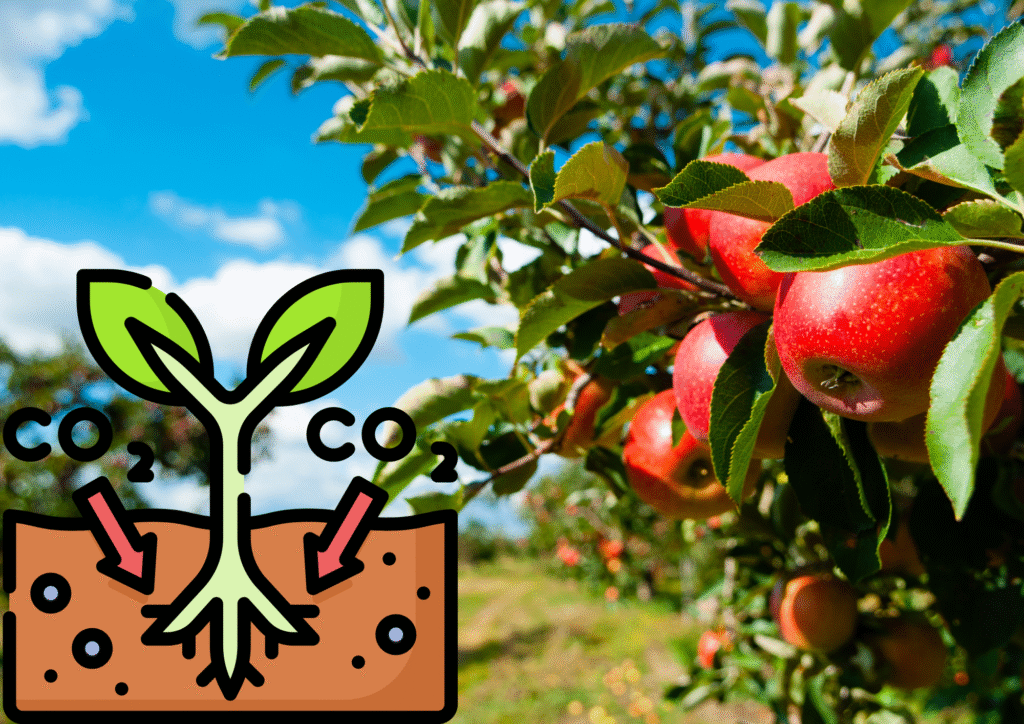
- アミノ酸はどう吸収される?
植物が土の中のアミノ酸を吸い取るとき、主に「根」の先端にある細胞が働きます。
このとき、アミノ酸を外から中に運ぶ「輸送たんぱく質」が関わっており、エネルギー(ATP)を使って吸収します。
吸収されたアミノ酸は、次に植物の体内で運ばれます。
どこへ行くかというと、葉っぱや芽、果実など、成長に必要な場所です。
- 実験でわかったアミノ酸の流れ
この研究では、「14C(放射性の炭素)」を使ったアミノ酸を与え、その動きをカメラのような装置で追いかける「オートラジオグラフィ」という技術を使いました。
その結果
アミノ酸は根から吸収され、すぐに葉のほうへ移動する。
吸収後1時間以内に葉まで届くものもある。
吸収されたアミノ酸は、分解されたり、たんぱく質に合成されたりする。
これにより、植物の中でアミノ酸が「ただの窒素源」ではなく、「そのまま使われる栄養」としても活用されていることが確認されました。
- どんなアミノ酸が吸収されやすい?
植物が吸収しやすいアミノ酸と、そうでないものがあります。
吸収されやすい:グルタミン、アラニンなど
吸収されにくい:芳香族(ベンゼン環を持つような構造)のアミノ酸
これは、アミノ酸の構造の違いによって、輸送たんぱく質との相性が変わるからです。
また、土のpHや温度、他のイオンの存在なども吸収効率に影響します。
- 吸収されたアミノ酸はどう使われる?
吸収されたアミノ酸は以下のように使われます。
たんぱく質の材料:新しい細胞を作るときに使われます。
代謝の材料:ホルモンや色素など、他の重要な物質の原料にもなります。
エネルギー源:必要に応じて、分解されてエネルギーとしても使われます。
特に重要なのは「グルタミン酸」や「アスパラギン酸」などの代謝の中心にあるアミノ酸で、これらが他のアミノ酸の材料にもなっています。
- 植物種による違い
実験では、稲(イネ)やシロイヌナズナ、キュウリ、トマトなどが調べられました。すると、植物の種類によってアミノ酸の吸収スピードや部位が違うことがわかりました。
たとえば・・・。
イネでは、アミノ酸は根の毛の部分で多く吸収される。
シロイヌナズナでは、根の先端での吸収が目立つ。
また、光合成や成長のステージによっても吸収のパターンは変わるようです。
- どうしてこの研究が大事なの?
これまで、農業では「硝酸態窒素」を中心に肥料を与えていました。
でも、それは地中で流れ出しやすく、環境汚染の原因にもなっていました。
この研究によって、
アミノ酸を使った肥料(有機肥料)でも効果がある
植物の栄養吸収メカニズムをより詳しく理解できる
持続可能な農業(SDGs)に近づける
というメリットがあると考えられています。
- まとめ
この研究は、植物がアミノ酸をどのように吸収し、使っているのかを細かく調べたものです。
高校生のみなさんが学ぶ「光合成」「呼吸」「たんぱく質合成」といった内容とも深く関係があります。
これからの農業や環境問題を考えるうえでも、こうした基礎研究はとても大切です。
福島県農業総合センター「植物のアミノ酸吸収・代謝に関する研究」(2010年)
植物の生育とアミノ酸:ブドウ糖と窒素をめぐる物語
- 植物の「栄養」はどうできるのか?
植物は動物と違って、自分で食べ物を探したり動き回ったりしません。
かわりに、空気・水・土という自然環境から必要なものを取り入れ、自分の体をつくり出します。これが光合成と栄養吸収です。
空気中の二酸化炭素(CO₂) → 葉の中の光合成でブドウ糖に
根からの水とミネラル(N, P, Kなど) → 様々な代謝反応で有機化合物に
その結果、植物は炭水化物(ブドウ糖、セルロース)、タンパク質(アミノ酸から)、脂質などの「体を作る材料」を生み出します。
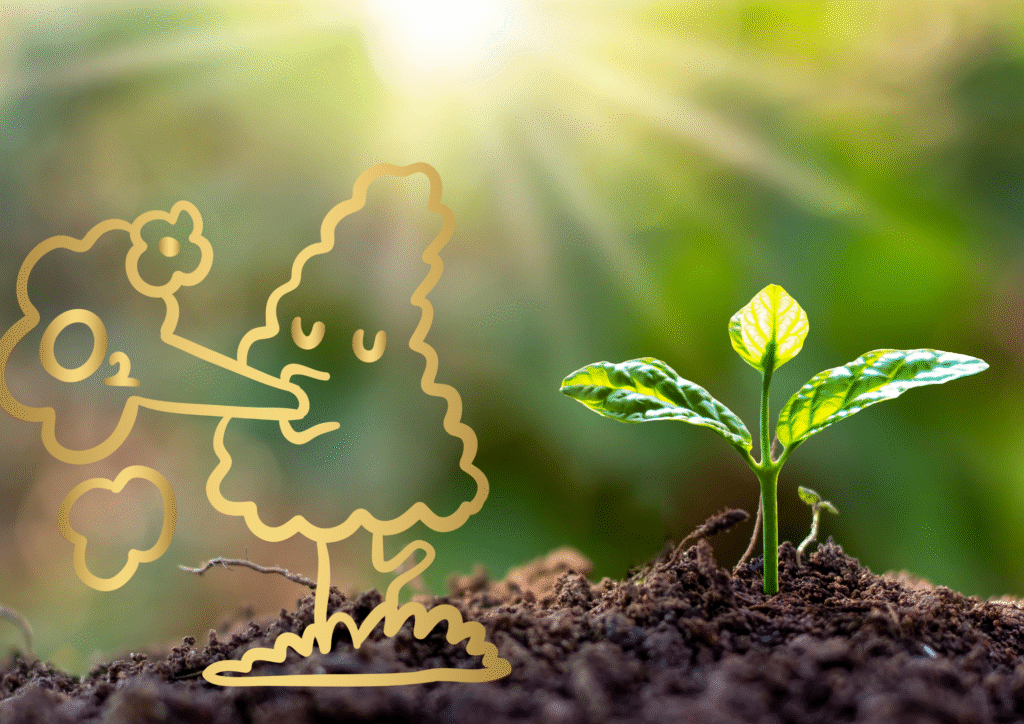
- ブドウ糖は植物のエネルギー源
光合成によって作られるブドウ糖(グルコース)は、植物にとって最も基本的な「燃料」であり、「材料」でもあります。
燃料として使うとき:呼吸(代謝)でエネルギー(ATP)を得る
材料として使うとき:セルロース、デンプン、脂質などの合成
ブドウ糖はまさに植物の生命活動を支える中心です。
しかし、単なる炭素だけでは「体」は作れません。タンパク質や酵素、葉緑体や細胞壁を作るには「窒素」が必要です。
- 無機窒素とアミノ酸の関係
土の中には、植物が吸収できる形の窒素が2種類あります。
硝酸(NO₃⁻)
アンモニウム(NH₄⁺)
これらは根から吸収され、葉に送られ、植物の体内でアミノ酸に変換されます。
では、アミノ酸とは何かというと。
「アミノ酸は、炭素・水素・酸素に加えて“窒素”を含んだ有機化合物。
タンパク質のもとになる最小単位。」
つまり、ブドウ糖(C₆H₁₂O₆)に窒素を加え、酵素の働きで組み立てていくことでアミノ酸ができるのです。
このアミノ酸は、さらにつなぎ合わされてタンパク質となり、植物の体を作ります。
- アミノ酸合成には「コスト」がかかる
重要なのは、アミノ酸を作るには、植物の中でエネルギーと酵素の働きが必要ということです。
無機窒素(NO₃⁻)をアンモニアに還元(酵素とATPを使う)
アンモニアを有機物(例:ケト酸)に結合(さらにATP使用)
アミノ酸に変換
必要に応じて他のアミノ酸に転換・タンパク質に合成
この一連の流れは、植物にとってかなりの「負担(エネルギー消費)」をともないます。
特に硝酸態窒素を利用すると、炭素源(=ブドウ糖)とATPが多く消費されます。
- アミノ酸を外から与えるとどうなるか?
ここで、もしアミノ酸がそのまま根から吸収できるとしたら?
植物はアミノ酸合成にかけていた「エネルギー」や「ブドウ糖」を節約できる。
余ったブドウ糖はセルロースなど構造物質の合成や、果実の甘さ(糖蓄積)にまわせる。
成長が速くなる可能性がある。
実際、近年の研究(鈴木芳江 2007 ほか)では、植物はグルタミンやアスパラギンなどを根から取り込めることが確認されています。
また、それらが直接葉に輸送され、タンパク質合成に使われる例もあります。
- 余ったブドウ糖はどう使われる?
ブドウ糖は余剰になると
デンプンとして葉や根に貯蔵
セルロースやヘミセルロースなどの構造物質に合成 → 茎・葉・実が太くなる
果実・根菜に蓄積 → 味の向上や収量アップ
このように、ブドウ糖に余裕があればあるほど、植物はより「強く・美味しく・大きく」なるわけです。
- 有機農業やアミノ酸肥料の可能性
この知見は、アミノ酸肥料や有機資材(魚粕、油かす、堆肥)の意味を再評価するヒントにもなります。
これらにはペプチドやアミノ酸が含まれており、植物にとっては直接的な栄養源になります。
アミノ酸 → そのまま使える
有機物 → 分解後アミノ酸として利用
また、環境負荷の高い窒素肥料の使用量を減らし、持続的な農業に貢献できます。
- 注意点:吸収量と種類には限界がある
とはいえ、アミノ酸の吸収は無制限ではありません。
吸収しやすい種類としにくい種類がある(例:グルタミン、アラニンは◎/芳香族アミノ酸は△)
濃度が高すぎると吸収が阻害されることも
無機窒素と一緒に与えると、相互に競合することがある
よって、アミノ酸供給は「うまくコントロールすること」が重要です。
- まとめ:生長を支える3つの要素とアミノ酸の意義
植物の生長は、以下の3要素のバランスにより決まります。
炭素源(ブドウ糖)
窒素源(アミノ酸/無機窒素)
エネルギー(ATPなど)
このうち、「ブドウ糖 + 無機窒素 → アミノ酸合成」というルートを短縮し、アミノ酸をそのまま与えることで、生育全体の効率が高まります。
これにより、余ったブドウ糖を他の成長に回せるため、作物の「質と量」が上がる可能性があります。
補足:未来への展望
アミノ酸吸収能が高い品種の育成
土壌中の微生物と連携したアミノ酸供給
水耕栽培でのアミノ酸施肥技術の最適化
作物別のアミノ酸要求量の研究
こうした分野が今後の農業のキーワードです。
Introduction: Do Plants “Eat” Amino Acids?
Have you ever wondered how plants get their nutrients?
Typically, plants absorb nitrogen from the soil in the form of nitrate or ammonium through their roots. They then use this nitrogen to synthesize amino acids and proteins.
However, recent research has shown that plants can directly absorb amino acids from the soil.
This is a new and unexpected discovery that could change how we think about plant nutrition.
How Do Plants Absorb Amino Acids?
The tips of plant roots contain cells that take in amino acids using transporter proteins, which require energy (ATP).
Once absorbed, the amino acids are transported to parts of the plant where growth occurs—leaves, buds, and fruit.
Tracking Amino Acid Movement Through Experiments
Researchers used a technique called autoradiography, using amino acids labeled with radioactive carbon (¹⁴C), to visualize their movement.
Findings include:
- Amino acids are absorbed by the roots and quickly move to the leaves.
- Some reach the leaves within an hour.
- Once inside, they are either broken down or used for protein synthesis.
This confirms that amino acids are used not just as a nitrogen source, but directly as nutrients.
Which Amino Acids Are More Readily Absorbed?
Some amino acids are more easily absorbed than others:
- Easily absorbed: Glutamine, alanine
- Poorly absorbed: Aromatic amino acids (e.g., those with benzene rings)
This depends on how well each amino acid fits with transporter proteins. Soil pH, temperature, and other ions also affect uptake efficiency.
What Happens to Absorbed Amino Acids?
Absorbed amino acids are used for:
- Protein synthesis: To build new cells
- Metabolism: As precursors to hormones, pigments, etc.
- Energy: Broken down when needed
Amino acids like glutamic acid and aspartic acid play a central role in metabolism and serve as building blocks for others.
Differences Among Plant Species
Experiments on rice, Arabidopsis, cucumber, and tomato showed species-specific differences in uptake speed and location:
- Rice absorbs mainly through root hairs
- Arabidopsis absorbs more through root tips
Absorption patterns also change depending on photosynthesis activity and growth stages.
Why Is This Research Important?
Traditional agriculture focuses on nitrate-based fertilizers. However, nitrates can easily leach into groundwater and cause pollution.
This research suggests:
- Amino acid-based fertilizers (organic) can also be effective
- We can better understand plant nutrient uptake
- It supports sustainable agriculture (SDGs)
Summary
This study sheds light on how plants absorb and use amino acids, tying into key concepts like photosynthesis, respiration, and protein synthesis—topics familiar to high school students.
Such fundamental research is crucial for the future of agriculture and environmental protection.
How Do Plants Build Their Bodies?
Unlike animals, plants don’t hunt for food. They build their bodies using air, water, and soil through photosynthesis and nutrient absorption.
- CO₂ from the air → converted into glucose via photosynthesis
- Water and minerals from roots → turned into organic compounds via metabolism
This process produces the basic materials of life: carbohydrates, proteins, and lipids.
Glucose: The Plant’s Energy Source
Glucose produced through photosynthesis is both fuel and building material:
- As fuel: burned in respiration to make ATP
- As material: used to build cellulose, starch, and lipids
But to build functional bodies (like enzymes or cell walls), nitrogen is also essential.
Inorganic Nitrogen vs. Amino Acids
There are two main forms of nitrogen in soil:
- Nitrate (NO₃⁻)
- Ammonium (NH₄⁺)
Plants absorb these and convert them into amino acids inside their bodies.
Amino acids = organic compounds with nitrogen, building blocks of proteins.
They’re made by combining glucose with nitrogen using enzymes and energy.
Making Amino Acids Takes Effort
To synthesize amino acids from inorganic nitrogen, plants must:
- Reduce nitrate to ammonium (using ATP and enzymes)
- Attach ammonium to organic acids like keto acids (more ATP used)
- Convert into amino acids
- Assemble proteins as needed
This process is energy-intensive, especially when using nitrate as a nitrogen source.
What If Plants Get Amino Acids Directly?
If plants can absorb amino acids directly from the soil:
- They can save energy and glucose used for amino acid synthesis
- Extra glucose can go to building structures and accumulating sugar in fruit
- Growth may accelerate
Studies (e.g., Yoshie Suzuki, 2007) confirm root uptake of glutamine and asparagine and their direct use in leaves for protein synthesis.
What Happens to Surplus Glucose?
When amino acids are supplied directly:
- Glucose can be stored as starch in leaves and roots
- Used to build structural materials like cellulose → thicker stems, leaves, and fruits
- Accumulates in fruits and roots → better taste and yield
So, surplus glucose contributes to stronger, tastier, and bigger crops.
Revisiting Organic Farming and Amino Acid Fertilizers
This insight supports reevaluating organic materials like fish meal, oil cake, and compost, which contain amino acids and peptides.
- Amino acids: directly usable
- Organic matter: broken down into amino acids
They can reduce reliance on synthetic nitrogen fertilizers, lowering environmental impact.
Caution: Limits on Uptake
However, amino acid absorption is not unlimited:
- Some amino acids are easier to absorb than others
- High concentrations may hinder uptake
- Can compete with inorganic nitrogen
Therefore, controlled application is key.
Conclusion: The Three Key Growth Factors
Plant growth relies on the balance of:
- Carbon source (glucose)
- Nitrogen source (amino acids/inorganic nitrogen)
- Energy (ATP)
By shortening the route from glucose + nitrogen → amino acid, and supplying amino acids directly, we boost plant growth efficiency—potentially improving both quality and yield.
Outlook for the Future
- Breeding plants with better amino acid uptake
- Synergies with soil microbes to supply amino acids
- Optimizing amino acid fertilization in hydroponics
- Crop-specific amino acid requirements
These will be the future frontiers of sustainable agriculture.


